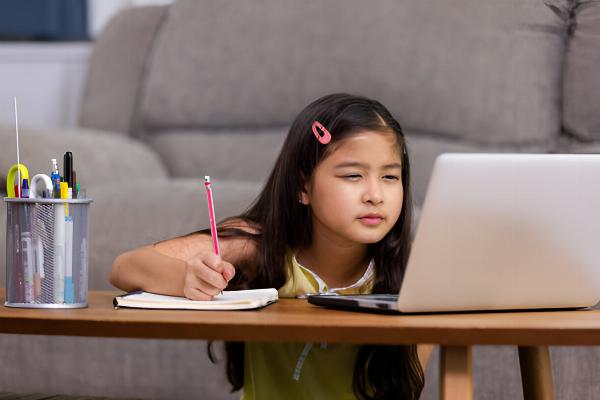How to Manage Myopia in Children: Tips for Parents

Strong 8k brings an ultra-HD IPTV experience to your living room and your pocket.
Myopia, or nearsightedness, is becoming increasingly common in children, with more cases being diagnosed at a younger age. This vision condition can have a significant impact on a child’s academic performance and overall well-being if not properly managed.
As a parent, understanding how to manage myopia in children is crucial to ensure they maintain healthy vision and reduce the risk of it worsening over time. In this guide, we will discuss practical tips for parents to manage myopia and help children develop good habits for eye health.
1. Schedule Regular Eye Exams
The most effective way to monitor and manage myopia in children is through regular eye exams. Early detection allows for prompt correction with glasses or contact lenses, ensuring that your child can see clearly in both the classroom and everyday activities.
Key tips for eye exams:
Take your child for a comprehensive eye exam once a year, or more often if recommended by an eye care professional.
Ensure that any prescription changes are made promptly to avoid eye strain or discomfort.
Ask the optometrist about myopia control options, such as specialized glasses or contact lenses designed to slow progression.
2. Encourage Outdoor Play
Spending more time outdoors has been shown to help reduce the risk of myopia progression in children. Exposure to natural light and focusing on distant objects outdoors may contribute to healthier eye development.
Outdoor activity tips:
Aim for at least 1–2 hours of outdoor play each day, whether it’s sports, biking, or simply walking in the park.
Encourage your child to take breaks from indoor activities and spend time in nature, especially on weekends and holidays.
Avoid excessive screen time indoors by balancing it with outdoor physical activity.
3. Implement the 20-20-20 Rule
Children often spend long hours on near tasks such as reading, studying, or using digital devices. Prolonged close-up work can increase eye strain and contribute to the progression of myopia. The 20-20-20 rule is an effective way to reduce eye strain during these activities.
How the 20-20-20 rule works:
Every 20 minutes, have your child look at something at least 20 feet away for 20 seconds.
Encourage frequent breaks from reading, writing, or using digital devices.
Set reminders or timers to help your child develop this habit while studying or playing on screens.
4. Limit Screen Time
Excessive use of digital devices, such as smartphones, tablets, and computers, has been linked to the increasing rates of myopia in children. Managing screen time is essential for protecting their vision.
Screen time management tips:
Limit screen time to no more than 1-2 hours per day for recreational activities.
Ensure that your child uses digital devices in a well-lit room to reduce eye strain.
Encourage your child to maintain a proper distance from the screen (about 18–24 inches) and adjust the screen brightness to a comfortable level.
5. Provide Proper Lighting for Reading and Studying
Poor lighting can exacerbate eye strain, especially during activities that require focus on close objects. Ensure that your child’s environment is well-lit, particularly during homework and reading sessions.
Lighting tips:
Use a desk lamp with adequate brightness when your child is reading or studying.
Make sure the lighting is not too harsh or dim, as both can cause discomfort.
Position the light source to minimize glare on screens or books.
6. Consider Myopia Control Options
For children with progressive myopia, certain treatments can help slow down the worsening of the condition. Ask your eye care professional about myopia control options that are suitable for your child’s specific needs.
Common myopia control treatments:
Multifocal glasses or contact lenses: These lenses are designed to reduce the strain on the eyes and slow myopia progression.
Orthokeratology (Ortho-K): These are special contact lenses worn overnight to reshape the cornea and temporarily improve vision without the need for glasses during the day.
Atropine eye drops: Low-dose atropine drops may be prescribed to slow down the progression of myopia in children. Regular follow-up with an eye care professional is necessary for this treatment.
7. Create a Balanced Routine
Balancing your child’s schedule with both academic and physical activities is crucial for managing myopia. A routine that includes sufficient outdoor play, limited screen time, and proper study habits will help reduce the strain on your child’s eyes.
Routine tips:
Establish a daily routine that balances study time with outdoor activities and breaks.
Encourage your child to engage in hobbies that promote outdoor play and distance vision, such as playing sports or exploring nature.
Make sure your child gets enough sleep each night, as proper rest is essential for eye health and overall well-being.
8. Educate Your Child About Eye Health
Helping your child understand the importance of taking care of their eyes will empower them to adopt healthy habits for life. Teach them how to protect their vision and recognize early signs of eye strain or discomfort.
Educational tips:
Explain to your child why taking breaks from near tasks and spending time outdoors is important for their eye health.
Show them how to properly care for their glasses or contact lenses, if they wear them.
Encourage your child to speak up if they notice any changes in their vision or experience discomfort, so you can address it promptly.
Conclusion
Managing myopia in children requires a proactive approach that includes regular eye exams, outdoor play, and the implementation of healthy habits. By creating a balanced routine, encouraging time away from screens, and exploring myopia control treatments, parents can help their children maintain better eye health and reduce the risk of severe myopia in the future. With the right strategies in place, managing your child’s vision can become a part of their overall wellness journey.
Note: IndiBlogHub features both user-submitted and editorial content. We do not verify third-party contributions. Read our Disclaimer and Privacy Policyfor details.


